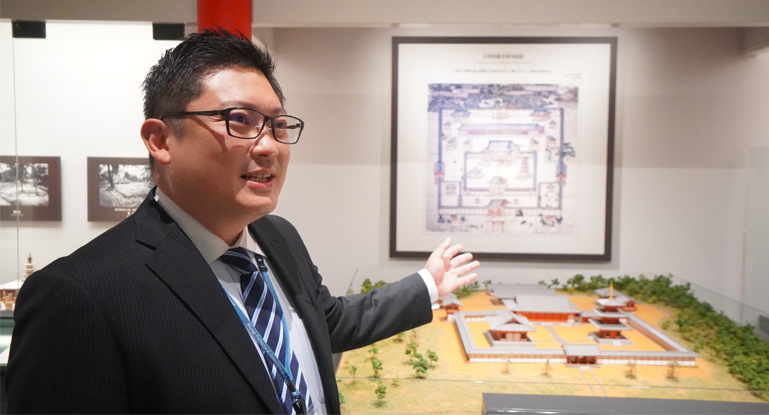At the Tohoku History Museum, you can learn about a wide range of history from the Paleolithic period to the modern era.
Curator Aizawa's top picks are the Jomon Era section centered on Matsushima Bay and the Ancient Era section centered on Tagajo, a strategic point for the control of the Tohoku frontier. He picked these sections because the items being exhibited here tell the stories of history. We asked Mr. Aizawa to tell us what makes these sections special.
First, the section featuring the Jomon period in Matsushima Bay. What kind of food did people eat in the Jomon period? Mr. Aizawa, who is a foodie, first wanted to know more about that. “I'm sure you've seen TV or newspaper reports about how many fish were landed in the ports of Tohoku. We found that even in the Jomon period, people ate a variety of fish and meat. Visit the stratum cross-section of the Satohama shell mound in the exhibition room. This is a display of actual strata that have been stripped directly from a Satohama shell mound. If you look closely, you can find shellfish such as clams and clamshells, bones of birds such as ducks, and turtles. This is a valuable resource for understanding what the people of the Jomon period, who lived in Matsushima Bay, ate in spring, summer, autumn, and winter. Please have a look.”
The next recommendation is Tagajo Castle. It is a special historical site, in the same category as Heijo-kyo, where the emperor lived, and Dazaifu in the west. The Ancient Times section displays actual artifacts excavated from the Tagajo Castle site. Tagajo Castle served as the center of the government of Mutsu Province and played a military role in quelling the rebellion of the Emishi. Over the past 50 years, excavations of Tagajo Castle have revealed remains of the work of woodworkers and ironworkers, as well as the majinai prayers that were performed there. Of all the museums in Japan, the Tohoku History Museum is the only one where we can learn things about Tagajo and the lifestyles of the people who lived around there which we cannot learn from historical documents.
Mr. Aizawa likes to say, "The display pieces speak.” These pieces are indispensable for us to feel and think about history. The Tohoku History Museum exhibits many real artifacts from Matsushima Bay and its surroundings. These pieces offer a chance to think about the people who lived in Matsushima Bay during the Jomon period and in ancient times. Please visit and experience it for yourself.



